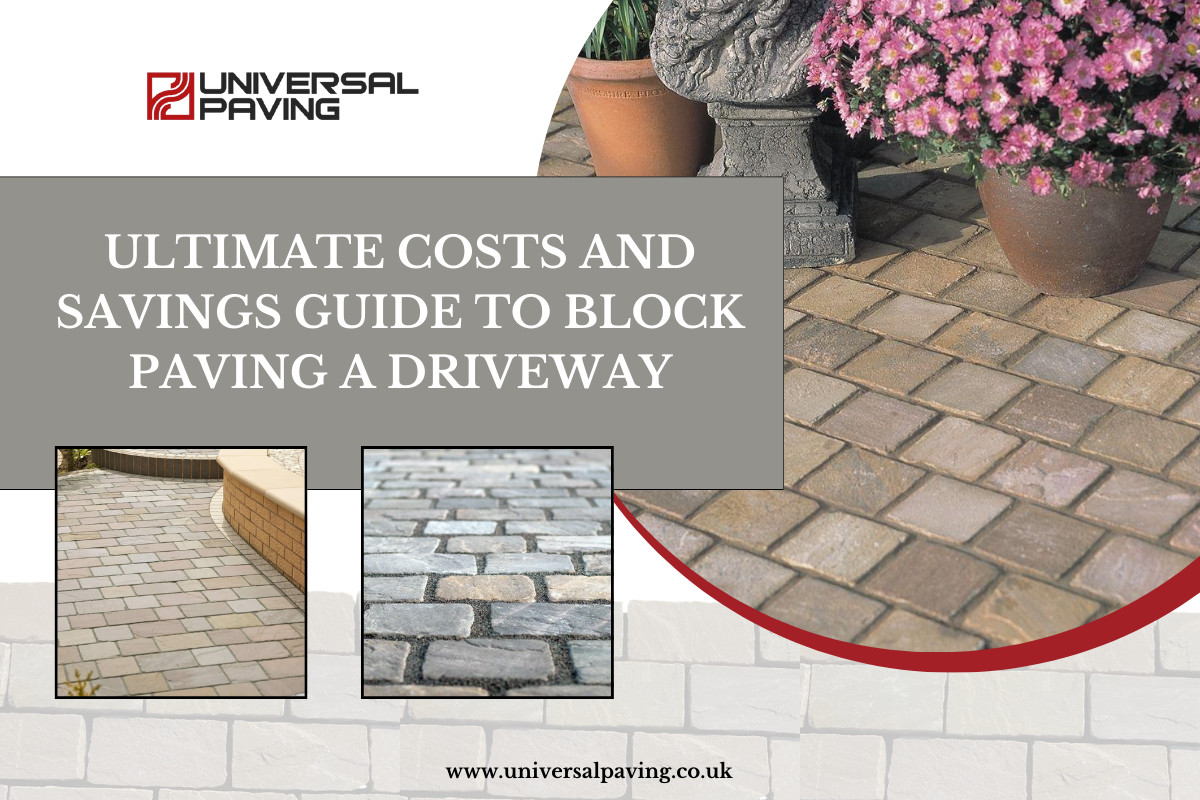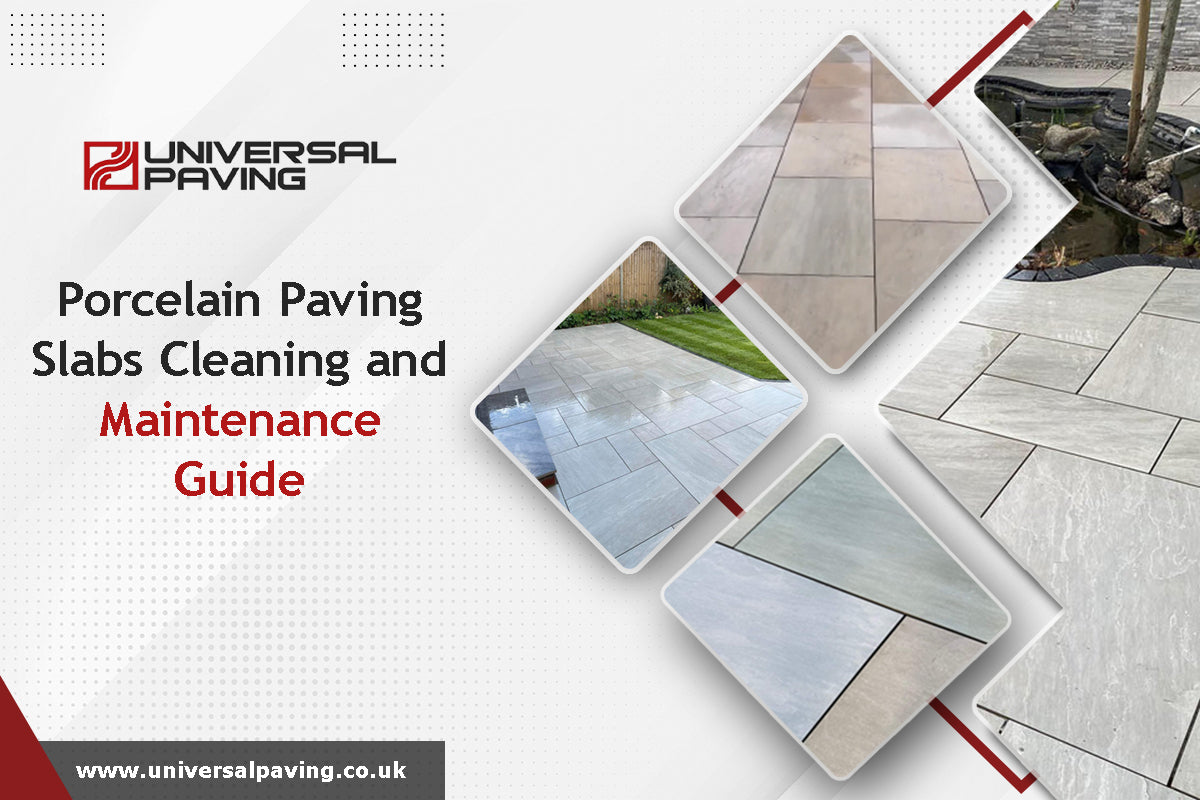
Patio Slabs vs. Pavers: Exploring the Distinctions
What is the Difference Between Patio Slabs and Pavers?
Patio slabs and pavers stand as favored options for crafting outdoor spaces that blend functionality with visual allure. Though sharing a common purpose, they diverge significantly in their characteristics, materials, installation approaches, design potentials, and upkeep requisites. In this comprehensive manual, we delve into the nuanced disparities between patio slabs and pavers, guiding you toward informed decisions aligned with your outdoor visions.
Unveiling Patio Slabs:
Definition and Identifying Features:
Patio slabs emerge as sizable, flat components of concrete or stone, strategically deployed to establish sturdy, even surfaces for outdoor locales. Typically rectangular or square in shape, they offer a spectrum of dimensions and thicknesses. The hallmark of patio slabs lies in their ability to furnish spaces with seamless, contemporary aesthetics, embodying cleanliness and modernism.
Materials Characterizing Patio Slabs:
Patio slabs draw from a diverse array of materials, spanning concrete, natural stone, and porcelain. Concrete variants, renowned for their endurance and affordability, reign supreme. Alternatively, natural stone selections, such as limestone or sandstone, confer opulence and authenticity. Porcelain slabs represent a newer entrant, amalgamating concrete's resilience with natural stone's allure.
Advantages and Drawbacks of Patio Slabs:
Advantages:
- Streamlined Aesthetics : Patio slabs deliver a polished, seamless facade, epitomizing contemporary elegance.
- Durability : Particularly concrete or porcelain iterations, exhibit robustness against heavy foot traffic and climatic rigors.
- Versatility : Patio slabs, available in diverse shapes, sizes, and hues, afford boundless design permutations tailored to individual tastes.
- Low Upkeep : Requiring minimal maintenance, they preserve their pristine allure with scant attention.
Disadvantages:
- Limited Adaptability : Once laid, altering patio slabs proves challenging, lacking the malleability inherent to pavers.
- Proneness to Cracking : Concrete slabs, in particular, are susceptible to fissuring over time, especially sans diligent installation or care.
- Elevated Costs : Particularly natural stone or porcelain variants, tend to command higher price points relative to pavers.
Deciphering Pavers:
Definition and Identifying Features:
Pavers manifest as diminutive units interlocking harmoniously to forge supple, versatile outdoor surfaces. Fashioned from concrete, clay, or natural stone, they exhibit myriad shapes, sizes, and hues. Pavers exude a hallmark trait of enabling intricate designs and patterns, fostering limitless customization prospects.
Materials Characterizing Pavers:
Pavers boast a repertoire of materials, each endowing distinct attributes. Predominantly, concrete pavers reign, lauded for their robustness and flexibility. Clay counterparts evoke timeless sophistication, whereas natural stone iterations, like granite or travertine, evoke opulence and authenticity.
Advantages and Drawbacks of Pavers:
Advantages:
- Flexibility and Versatility : Pavers lend themselves to diverse arrangements and designs, fueling creativity and personalized configurations.
- Ease of Repair : Should a unit succumb to damage, individual pavers can be swiftly replaced sans compromising the overall integrity.
- Enhanced Drainage : Endowed with inter-unit joints, pavers optimize water dispersal, outstripping solid patio slabs in this regard.
- Cost-Effectiveness : Particularly concrete variants, emerge as budget-friendly alternatives vis-à-vis patio slabs.
Disadvantages:
- Susceptibility to Weed Growth : Inter-paver joints may foster weed proliferation, necessitating periodic maintenance to preempt overgrowth.
- Heightened Maintenance : Pavers mandate regular upkeep encompassing sweeping, cleansing, and re-leveling endeavors.
- Diminished Seamlessness : The interlocking nature of pavers engenders discernible joints, diverging from the seamless allure of patio slabs.
Installation Protocols:
Patio Slabs Installation:
- Site Preparation : Clearing and leveling the designated area, accompanied by compacting the ground to establish a stable foundation.
- Base Material : Layering compacted aggregate or sand to furnish a level groundwork for the slabs.
- Slab Placement : Meticulously situating the slabs atop the prepared base, ensuring alignment and adequate spacing.
- Joint Filling : Employing sand or flexible jointing compound to stabilize the slabs and forestall weed incursion.
- Finishing Touches : A meticulous inspection culminating in sweeping away excess sand or debris, ensuring a pristine, finalized surface.
Pavers Installation:
- Site Preparation : Analogous to patio slabs, necessitating clearing, leveling, and compacting the designated area.
- Base Material : Layering compacted aggregate or sand, albeit with a thicker stratum to accommodate pavers' exigencies.
- Edge Restraints : Incorporating concrete or plastic edging to fortify paver positioning and deter displacement.
- Sand Bedding : Dispensing a layer of sand atop the base, furnishing a smooth, uniform platform for paver placement.
- Paver Placement : Sequentially situating pavers atop the sand bed, followed by interlocking and alignment adjustments.
- Joint Filling : Completing the installation entails infusing sand or polymeric substances within the interstices, bolstering stability and hindering weed encroachment.
- Compaction : Employing a plate compactor to engender paver solidity, fortifying their integration into a robust, cohesive ensemble.
- Finishing Touches : Concluding with meticulous debris removal and scrutiny for levelness and steadfastness.
Must read: How to Install Porcelain Patio Pavers in a Backyard?
Design Flourishes:
Patio Slabs Design Panache:
- Rectangular or Square Layout : Exuding understated elegance, ideal for a contemporary aesthetic.
- Random Layout : Embracing diversity, intertwining various sizes and shapes to impart an organic ambiance.
- Patterns : Heralding visual intrigue, diverse patterns like herringbone or basket weave confer textural allure.
- Border or Accent : Augmenting visual appeal, diverging hues or sizes can delineate focal points or demarcate distinct zones.
Pavers Design Flourishes:
- Traditional Patterns : Evoking timeless charm, classic motifs like herringbone or running bond exude sophistication.
- Mixed Patterns : Championing originality, blending diverse shapes, sizes, and hues to engender bespoke visual narratives.
- Borders and Accents : Infusing vivacity, contrasting hues or patterns can delineate boundaries or accentuate select areas.
- Inlays and Mosaics : Catalyzing artistic expression, pavers can be orchestrated into intricate tapestries, celebrating individuality and creativity.
Maintenance Imperatives:
Patio Slabs Maintenance Regimen:
- Regular Cleaning : Sweeping or washing with mild detergents to expunge dirt, stains, or debris.
- Sealing : Depending on material proclivities, periodic sealing safeguards against stains, weathering, and hue degradation.
- Weed Control : Vigilant scrutiny of inter-slab joints to preempt weed intrusion, effecting prompt eradication if detected.
- Crack Remediation : Addressing fissures or blemishes expeditiously to uphold aesthetic integrity and structural robustness.
Pavers Maintenance Protocol:
- Routine Cleansing : Obliging sweeping or washing with mild cleansers to dislodge accumulations sans detrimental abrasives or high-pressure jets.
- Joint Maintenance : Periodical joint inspection to curtail weed propagation and restore compactness via sand replenishment.
- Re-Leveling : Addressing subsidence or unevenness, rectifying disparities with judicious sand incorporation.
- Repair or Replacement : Prompt identification and substitution of impaired or defaced pavers, safeguarding visual coherence and structural integrity.
Navigating Repair and Replacement Scenarios:
Patio Slabs Repair and Replacement:
- Cracked Slabs : Prone to extensive fissuring, necessitating potential slab overhauls to rectify structural compromise.
- Uneven Slabs : Amenable to adjustment via additional substrate layering to restore equilibrium and stability.
- Individual Replacement : Select instances permit singular slab substitution, albeit challenging when sourcing exact matches.
Pavers Repair and Replacement:
- Individual Replacement : Streamlined restoration, enabling singular paver extraction and substitution devoid of overarching surface repercussions.
- Color Consistency : Prudent matching of replacement pavers to extant ones to preserve visual uniformity and harmony.
- Sunken Pavers : Readily remedied by supplementing substrate material to reclaim evenness and solidity.
Cost Efficiency Comparisons:
Cost Dynamics of Patio Slabs:
Prices for patio slabs vary based on the material, size, and complexity, ranging from £8 to £23 per square foot. Natural stone or porcelain options typically come at a higher price point.
Considerations for Pavers Costs:
Pavers' prices range from £4 to £23 per square foot, depending on the material and design. Concrete pavers generally provide cost advantages compared to patio slabs.
Must read: How Much Does It Cost to Have a Block Paving Driveway?
Endurance and Longevity Assessments:
Patio Slabs Durability and Longevity:
Bolstered by concrete or porcelain compositions, they embody resilience and endurance, promising multi-decade service with judicious maintenance.
Pavers Durability and Longevity:
Fortified by concrete's tenacity, pavers exhibit robustness against pedestrian and environmental exigencies, promising enduring service with diligent upkeep.
Environmental Implications:
Patio Slabs Environmental Impact:
Impacted by materials, concrete slabs bear heightened carbon imprints owing to energy-intensive fabrication, albeit salvaged by recycling initiatives.
Pavers Environmental Footprint:
Particularly concrete variants, benefit from reduced carbon footprints via recycled material incorporation, echoing sustainability strides within the industry.
Optimal Selection Criteria:
- Aesthetic Preferences : Patio slabs exude contemporary refinement, while pavers facilitate customizable, intricate designs.
- Budgetary Allocations : Pavers furnish cost-effective alternatives, especially concrete variants, contrasting patio slabs' upscale pricing.
- Maintnance Considerations : While patio slabs demand minimal upkeep, pavers proffer simplified repair and replacement avenues.
- Adaptability Prerequisites : Pavers' flexibility for expansion or modification contrasts the permanence accompanying patio slab installation.
- Environmental Stances : Deliberate the ecological ramifications of patio slabs' energy-intensive production against pavers' recycled material propensities.
Expert Consultations for Informed Decisions:
Consulting paving professionals akin to Universal Paving is prudent, ensuring tailored insights harmonizing with your unique needs and visions. Enlist their expertise to navigate the nuances and actualize your outdoor aspirations seamlessly.
In Conclusion:
Both patio slabs and pavers epitomize superlative options for sculpting outdoor spaces marrying form with function. While patio slabs emanate streamlined sophistication, pavers exude versatility and customization potential. Evaluate considerations spanning aesthetics, budget, maintenance requisites, and environmental implications judiciously to realize the quintessential choice for your outdoor oasis.
Collaborate with specialists to ensure astute deliberations culminate in the fruition of your envisioned outdoor sanctuary.
Must read: Why is Concrete the Most Effective Option for Paving Projects?


